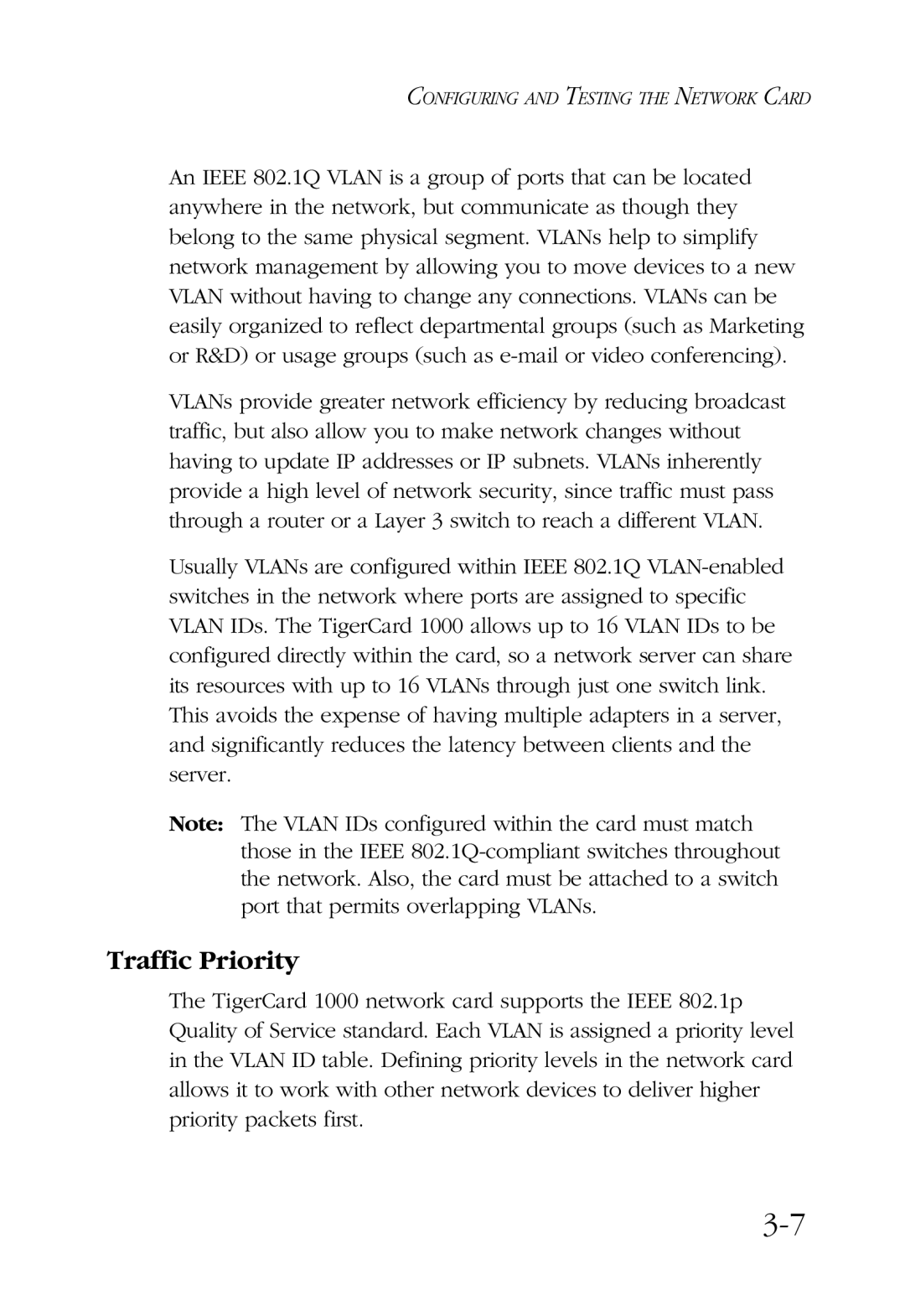CONFIGURING AND TESTING THE NETWORK CARD
An IEEE 802.1Q VLAN is a group of ports that can be located anywhere in the network, but communicate as though they belong to the same physical segment. VLANs help to simplify network management by allowing you to move devices to a new VLAN without having to change any connections. VLANs can be easily organized to reflect departmental groups (such as Marketing or R&D) or usage groups (such as
VLANs provide greater network efficiency by reducing broadcast traffic, but also allow you to make network changes without having to update IP addresses or IP subnets. VLANs inherently provide a high level of network security, since traffic must pass through a router or a Layer 3 switch to reach a different VLAN.
Usually VLANs are configured within IEEE 802.1Q
Note: The VLAN IDs configured within the card must match those in the IEEE
Traffic Priority
The TigerCard 1000 network card supports the IEEE 802.1p Quality of Service standard. Each VLAN is assigned a priority level in the VLAN ID table. Defining priority levels in the network card allows it to work with other network devices to deliver higher priority packets first.
